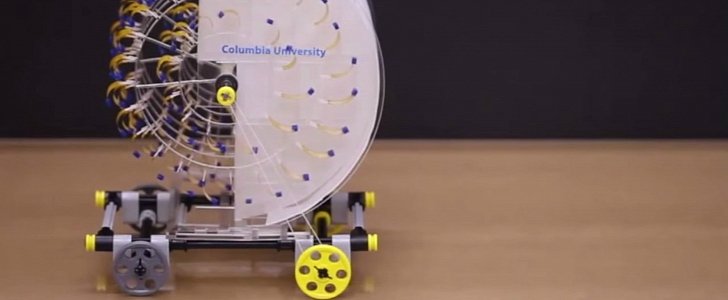At autoevolution, we’re mostly interested in tire-shredding leviathans such as the Hellcat lineup from Dodge, but we also have a passion for all things eco-friendly and brainy. Researchers at Columbia University created an engine that produces electricity by using artificial muscles (aka modified bacteria muscles) that respond to changes in humidity. In all frankness, the result left us speechless.
To be published in Nature Communications magazine is a thoroughly coveted achievement in the scientific world, but the breakthrough we’ve discovered via Softpedia is simply mind-boggling. Given time, converting nanoscale water-driven energy into evaporation-driven engines has all the chances in the world to threat the oil industry and change the automotive industry as we know it, SRT Hellcat included.
So, is that funny-looking thing more powerful than the big bad Mopar machine with 707 HP up its sleeves? Aaa, not quite, researchers are not there yet. In their defense, what you can admire in the video and gallery below is a gadget that employs bacterial spores applied to polyimide tape. Those diminutive spores of subtilies bacteria react to changing humidity by absorbing and releasing moisture. That’s how researchers created hygroscopy-driven artificial muscles or HYDRAs.
Extending, contracting, doesn’t that create energy? Of course it does! In the first segment of the adjacent video, we can admire HYDRAs lifting weight, though don’t expect them to shame a bodybuilder anytime soon. In the second segment, HYDRAs showcase their strength by producing energy for an evaporation-driven engine. The instructions manual has a single indication: just add water and voilà!
Fast-forward beyond the awkwardly named “Moisture Mill” contraption and we arrive at the focal point of this story - a miniature car driven by evaporation. Look at the thing and look at the HYDRAs flexing those muscles to propel that contraption. It won’t win any 0 to 60 mph stints, but do take into consideration that the evaporation-driven engine may find applications in powering robotic systems, sensors, devices and other machinery. Sci-fi is not fantasy!
If researchers find a way to amass enough bacteria spores into a contraption that can power a 1.5-ton passenger car, then the future of internal combustion is in danger. Our gut feeling tells that it won’t happen soon because it’ll be hard to come up with an oscillation-creating shutter mechanism powerful enough to move 1.5 tons from point A to point B. From a purely theoretical point of view, our hats go off to the brainiacs over at Columbia for this scientific breakthrough.
So, is that funny-looking thing more powerful than the big bad Mopar machine with 707 HP up its sleeves? Aaa, not quite, researchers are not there yet. In their defense, what you can admire in the video and gallery below is a gadget that employs bacterial spores applied to polyimide tape. Those diminutive spores of subtilies bacteria react to changing humidity by absorbing and releasing moisture. That’s how researchers created hygroscopy-driven artificial muscles or HYDRAs.
Extending, contracting, doesn’t that create energy? Of course it does! In the first segment of the adjacent video, we can admire HYDRAs lifting weight, though don’t expect them to shame a bodybuilder anytime soon. In the second segment, HYDRAs showcase their strength by producing energy for an evaporation-driven engine. The instructions manual has a single indication: just add water and voilà!
Fast-forward beyond the awkwardly named “Moisture Mill” contraption and we arrive at the focal point of this story - a miniature car driven by evaporation. Look at the thing and look at the HYDRAs flexing those muscles to propel that contraption. It won’t win any 0 to 60 mph stints, but do take into consideration that the evaporation-driven engine may find applications in powering robotic systems, sensors, devices and other machinery. Sci-fi is not fantasy!
If researchers find a way to amass enough bacteria spores into a contraption that can power a 1.5-ton passenger car, then the future of internal combustion is in danger. Our gut feeling tells that it won’t happen soon because it’ll be hard to come up with an oscillation-creating shutter mechanism powerful enough to move 1.5 tons from point A to point B. From a purely theoretical point of view, our hats go off to the brainiacs over at Columbia for this scientific breakthrough.






